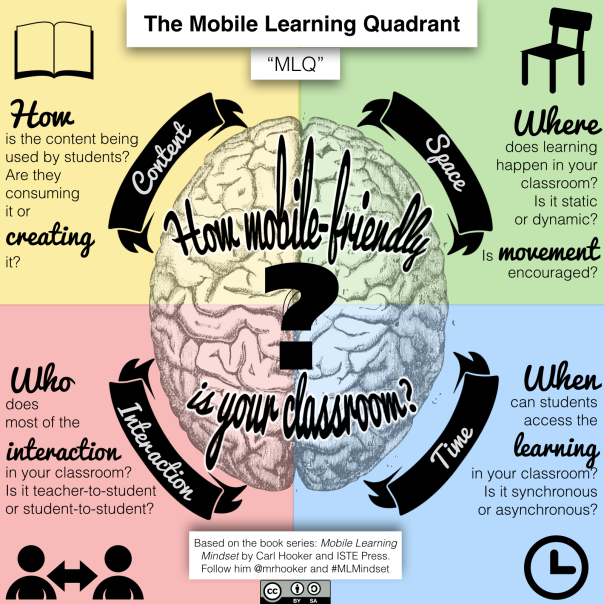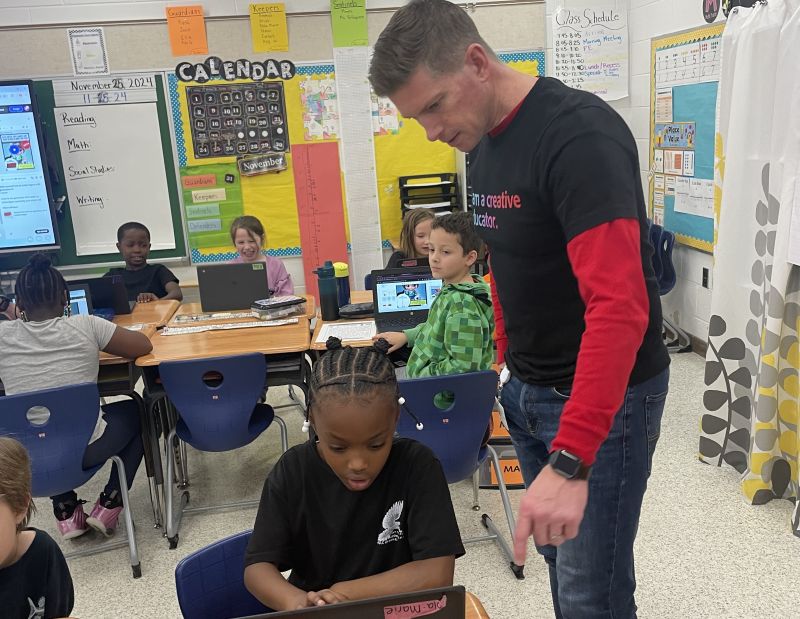How Mobile-Friendly is Your Classroom?

For generations, the main areas of learning in the classroom have been the same. Reading, Writing, Math, Science, and Social Studies. These “core” subject areas of curriculum have been a focus of American learners since the mid-20th century. These subject areas were thought to be the essential curriculum necessary to prepare the youth for success in college and the workplace. The manner in which these subject areas were taught mirrored the factory model method in which they were delivered. Content was passed back, row-by-row, as students repeated tasks and built skills over time.
While both traditional teaching styles and core subject areas have been slow to change to the modern world, the new area of mobile devices in classrooms is disrupting all of our previous ideologies around these sacred pillars of education. Repetitive tasks can now be gamified into forms that create critical thinking. Fact-based content can now easily be searched, opening up time to work on association and application of that information. Science and Math have given way to STEM. Reading and writing are now being embedded throughout the curriculum in a more project-based approach.
As these changes collide in a classroom that now welcome mobile devices, the modern teacher needs to think about how this affects change in their classroom in multiple areas. In Book #4 of the Mobile Learning Mindset, I represent this transition in a concept I call the Mobile Learning Quadrant (MLQ).
The four areas of the MLQ are Content, Space, Interaction and Time. Here’s a brief overview of how these four quadrants can change in a mobile learning environment:
Content
While much of the content in education is still based on the core subject areas (driven mostly by traditionalism and standardized testing), it now begins to take on a much more interactive form with mobile devices. Initial iterations of content on mobile devices meant glorified PDFs in the form of online textbooks. Still, at the beginning, mobile learning meant consuming content on a screen rather than in a book. In the new mobile learning environment, content must shift from consumption to creation. Rather than reading the textbook online, students can create their own textbook to demonstrate learning.
Space
The days of having desks in rows are over. It’s time to write an obituary to the student desk. Obviously the word “mobile” applies to much more than just devices. However, in many classrooms this isn’t the case. Devices are distributed to engage learners, yet really all they do is replace their paper notebook as students sit in rows and take notes on their Chromebooks. The mobile learning environment should contain flexible spaces that encourage interaction and collaboration with others in the room and online. It doesn’t always have to be an expensive new modern chair either. Many teachers are hacking their spaces with bean bag chairs, exercise balls and pub tables. Learning doesn’t even have to be contained within the classroom walls anymore. Teachers assessing their space in the MLQ should determine how much of their students’ time is spent in static spaces versus dynamic ones.

A sneak peak at our new Incubator room at Westlake High School. Purposeful and mobile furniture.
Tools and ideas to transform education. Sign up below.
Interaction
With more flexible space comes more meaningful interaction amongst students. When I took part in the #Student4aDay Challenge, in the classrooms where the space was static, there was little to know interaction between student to student. In fact, most of the interaction was uni-directional (teacher to student). However, in the classrooms with more flexible space and student created content, interaction becomes much more collaborative in nature rather than isolated.
Time
All of the above quadrants can still happen without technology or mobile devices. While mobile devices make them all much more possible and dynamic, much of it depends on how the teacher integrates them. The ability to shift learning from a set-time every day to more on-demand can only happen with technology. Remember only a couple of decades ago when in order to watch the next great episode of the Facts of Life, it meant that you had to sit in front of the television at 7:30 on Thursday night? If you missed it, you missed it. In our schools you could apply that same rule to the class schedule. If you are the type of person that learns math best in the afternoon but have to take math at 9:30 in the morning, you also “miss” it. Now with flipped classrooms and blended learning in a mobile environment, we can “bend” time to make the necessary content much more available on demand.
Infusing mobile learning into a classroom where students consume content in isolation in a desk at a set time of day is a waste in some ways. Creating flexible spaces that encourage collaboration to create content and an environment where learning can happen 24/7 is truly a thing to behold. Leveraging the MLQ in this way can really begin to move the needle when it comes to efficiency of learning with mobile devices.
Now, if we can just do something about those standardized tests…

My infographic on the Mobile Learning Quadrant (MLQ)
Editor’s note: This post is based on the book series Mobile Learning Mindset. This 6-book series explores how each key stakeholder can best support a mobile learning initiative. The first two books are already out and can be purchased here. Books 3 (focused on coaches and professional learning) and book 4 (focused on the teacher and classroom environment) are set to be published at the end of September.
cross posted at http://hookedoninnovation.com
Carl Hooker has been a part of a strong educational shift with technology integration since becoming an educator. As Director of Innovation & Digital Learning at Eanes ISD, he has helped spearhead the LEAP program, which put one-to-one iPads in the hands of all K-12 students in his 8000-student district. He is also the founder of “iPadpalooza”- a three-day “learning festival” held in Austin annually. He's also the author of the six-book series titled Mobile Learning Mindset, a guide for teachers, administrators, parents and others to support and embrace mobile learning in our schools.
Carl Hooker has spent the past 20+ years in education as a teacher and administrator focused on the thoughtful integration of technology and innovation. He consults for multiple districts across the country and is a frequent speaker at state and national events. In his free time he's an author, DJ, podcast host, Poetry Slammer, and Trivia Night MC. He's the co-founder of the social platform K12Leaders.com. Check out his latest book Ready Set FAIL! Now available for order here: https://mrhook.it/fail Read more of his blogs at Hooked on Innovation.
